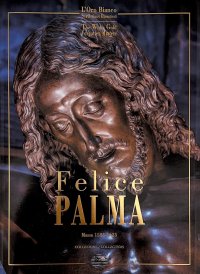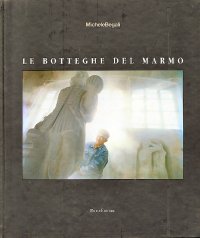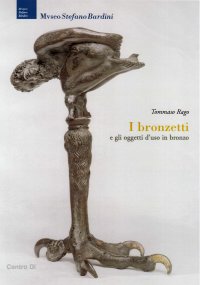Felice Palma. Massa 1583-1625. Collezione / Collection.
Texts by Andrei Cristina, Ciarlo Nicola, Federici Fabrizio, Claudio Casini and Sara Ragni.
Italian and English Text.
Pontedera, 2024; bound in a case, pp. 289, b/w and col. ill., b/w and col. plates, cm 24,5x34.
(L'Oro Bianco. Straordinari Dimenticati. The White Gold Forgotten Masters).
cover price: € 160.00
|
Books included in the offer:
Felice Palma. Massa 1583-1625. Collezione / Collection.
Texts by Andrei Cristina, Ciarlo Nicola, Federici Fabrizio, Claudio Casini and Sara Ragni.
Italian and English Text.
Pontedera, 2024; bound in a case, pp. 289, b/w and col. ill., b/w and col. plates, cm 24,5x34.
(L'Oro Bianco. Straordinari Dimenticati. The White Gold Forgotten Masters).
FREE (cover price: € 160.00)
Le botteghe del marmo
Italian and English Text.
Ospedaletto, 1992; bound, pp. 153, 10 b/w ill., 60 col. ill., cm 24x29.
(Immagine).
FREE (cover price: € 34.49)
Museo Stefano Bardini. I Bronzetti e gli Oggetti d'Uso in Bronzo
Edited by Nesi A.
Firenze, 2009; paperback, pp. 191, 102 b/w ill., 7 col. ill., cm 17x24,5.
(Museo Stefano Bardini).
FREE (cover price: € 30.00)
Bronzetti e Rilievi dal XV al XVIII Secolo
Bologna, 2015; 2 vols., bound in a case, pp. 729, ill., col. plates, cm 21,5x30,5.
FREE (cover price: € 90.00)
Alexey Shchusev. Architect of Stalin's Empire Style
Dmitrij Chmelnizki
DOM Publishers
English Text.
Berlin, 2021; paperback, pp. 160, 240 col. ill., cm 21x23.
ISBN: 3-86922-474-6 - EAN13: 9783869224749
Subject: Architects and their Practices,Essays (Art or Architecture),History of Architecture
Period: 1800-1960 (XIX-XX) Modern Period,1960- Contemporary Period
Places: Out of Europe
Languages: 
Weight: 0.5 kg
This monograph offers a critical view on Alexey Shchusev's work. The architectural historian Dmitrij Chmelnizki pursues the mysteries of one of the most famous Soviet architects whose name and work has remained a marginal note outside the Russian-speaking academic world to this day. But the book also shows that Shchusev's planning assignments in the twilight Soviet society require more intensive research. A future generation of architectural historians may be better able to answer the question of how independent such research will be possible in today's Russia.












